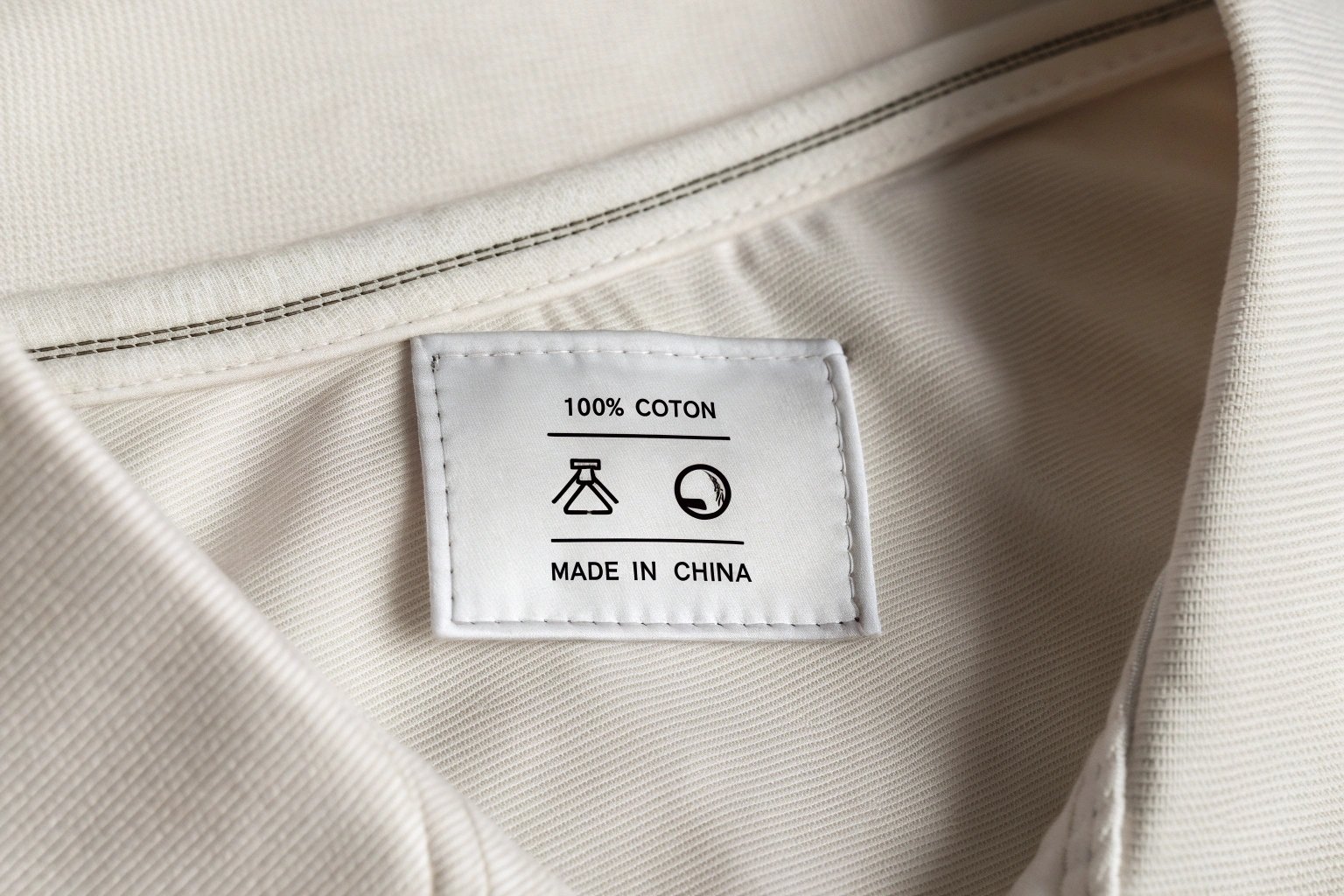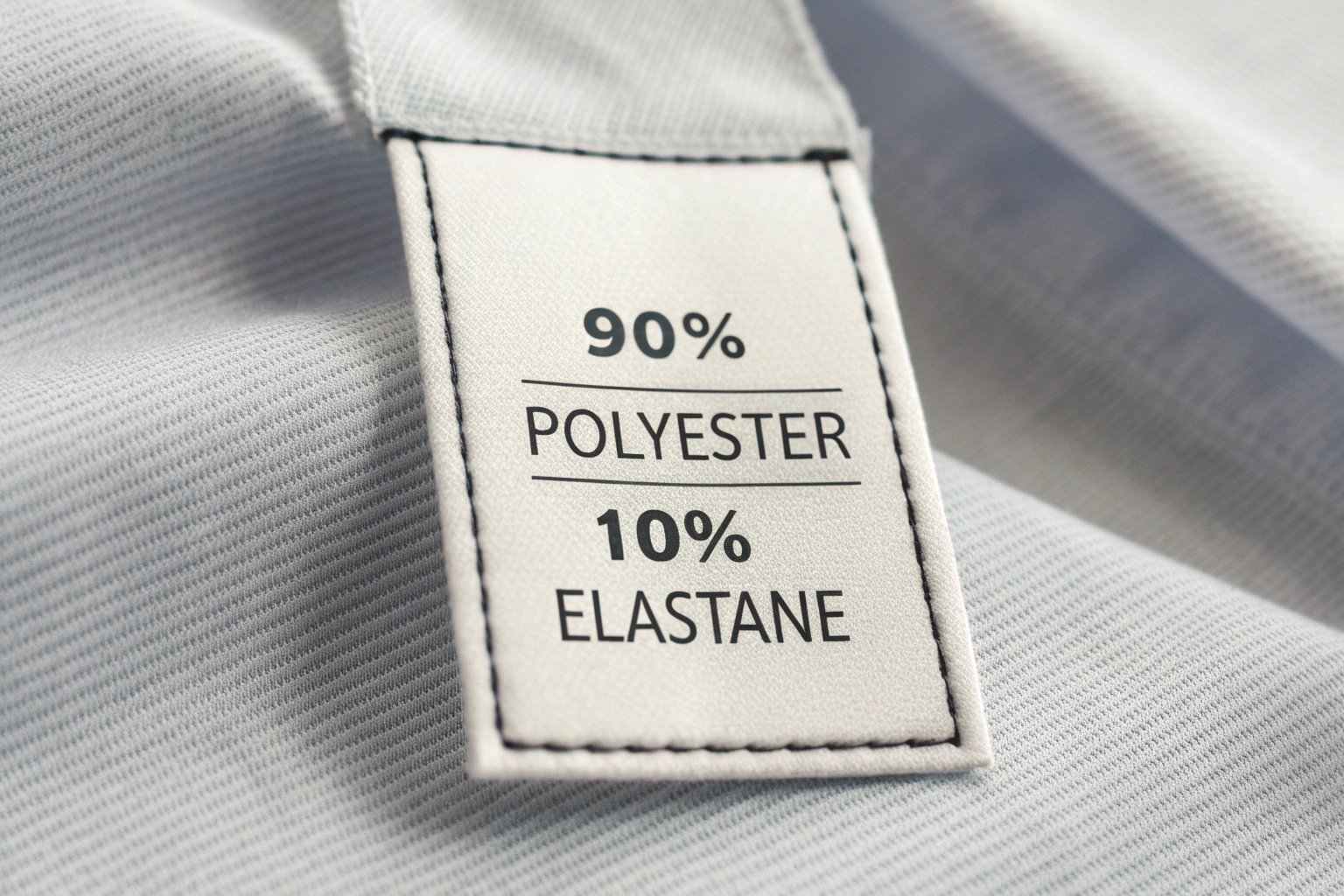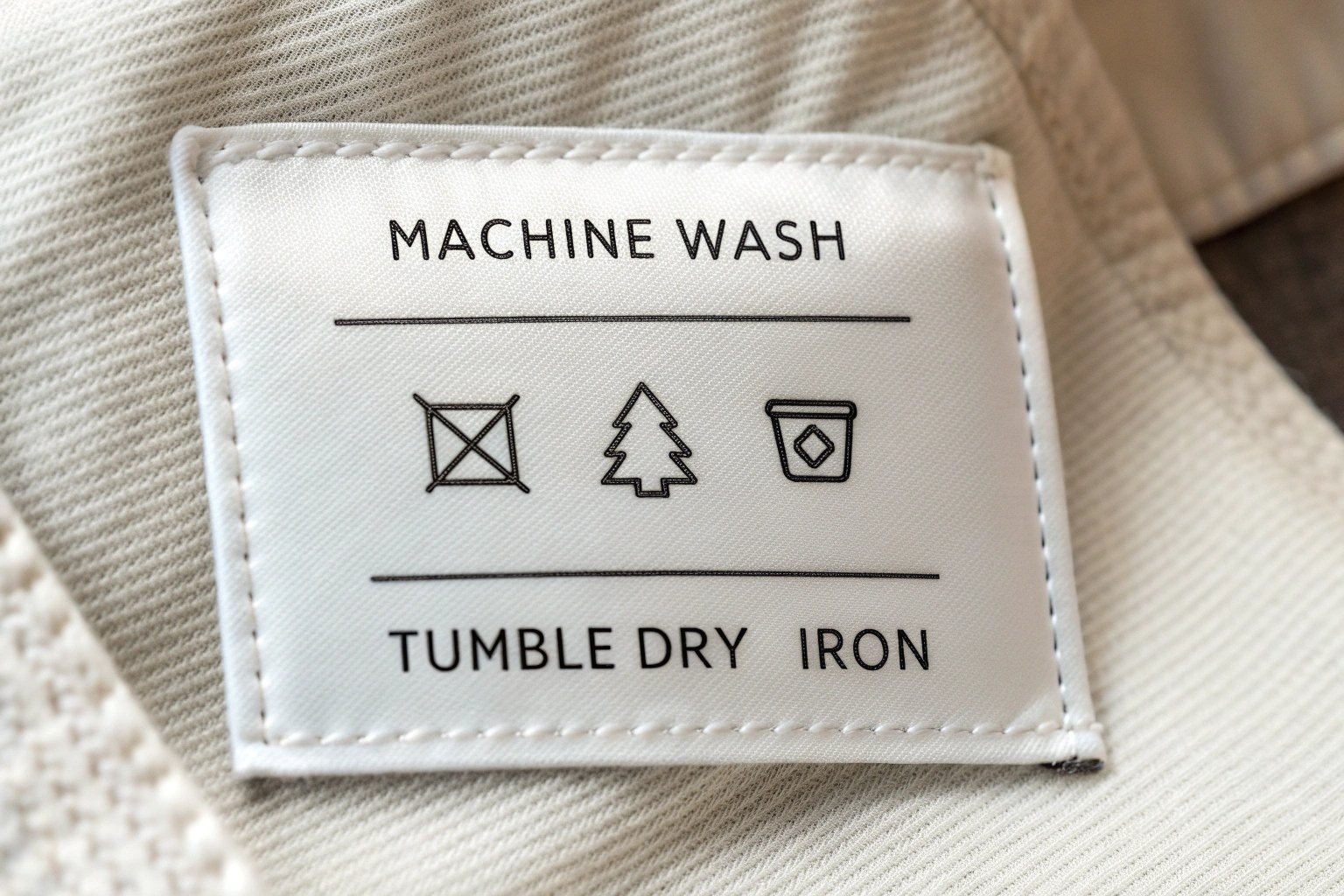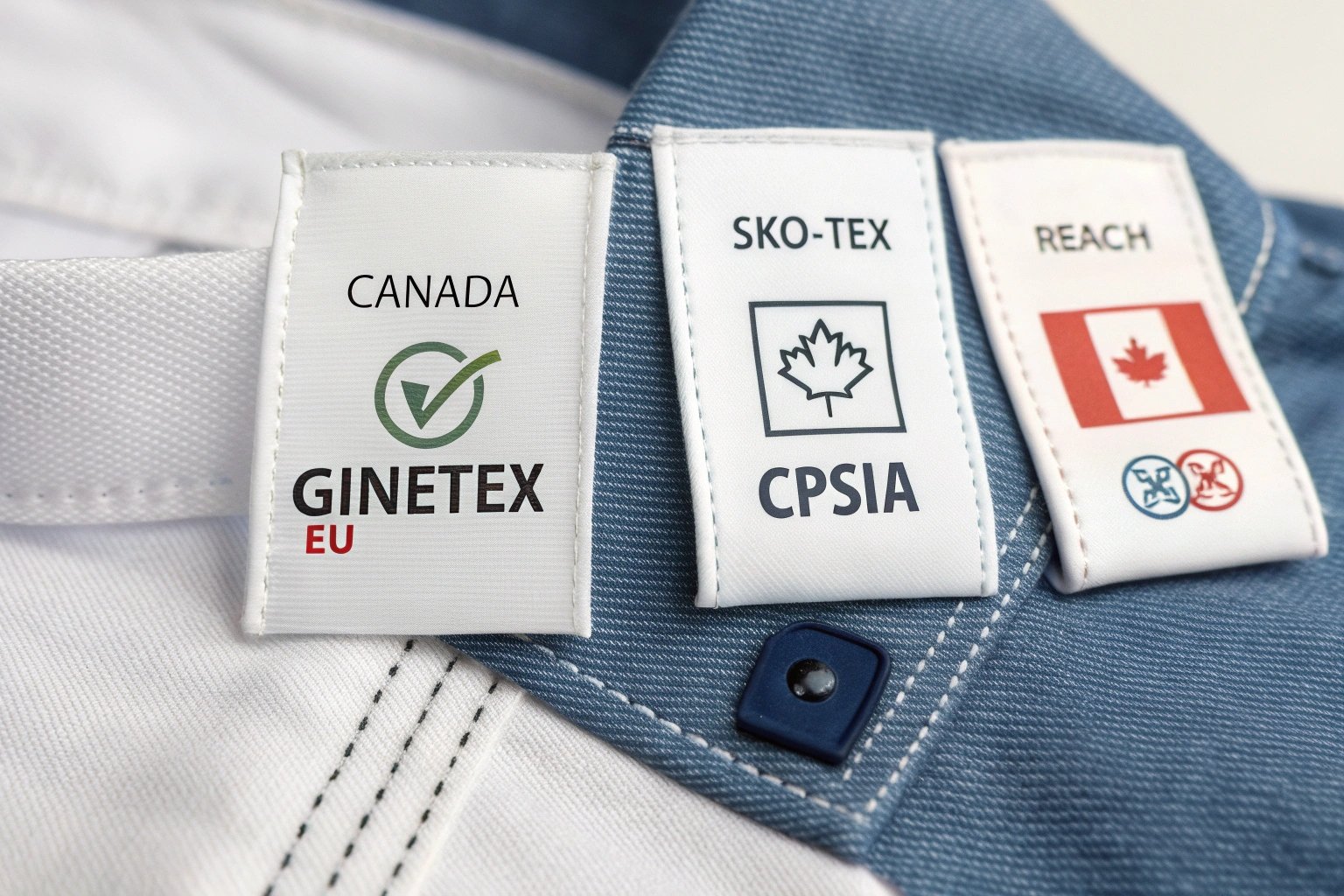Selling clothes without the right labels? That’s a shortcut to lost sales or worse—legal trouble.
Clothing labels must include fiber content, care instructions, country of origin, manufacturer identity, and size, as required by regulations in most major markets like the U.S., EU, and Canada.

The first time I helped ship an order overseas, we got a warning from a customs agent. Why? The label didn’t show the country of origin clearly. That one detail almost delayed the entire shipment. Since then, I’ve treated garment labeling like product design—critical, detailed, and non-negotiable.
What information must be on a garment label?
You can’t label clothing however you want—there are rules.
Required label info includes fiber content, care instructions, country of origin, manufacturer/distributor identity, and size—each must be clear, permanent, and readable.

Most countries follow similar labeling laws, but details vary. Here’s what you’ll need to cover:
| Label Element | Description |
|---|---|
| Fiber Content | Percentages of each material (e.g., 95% cotton, 5% spandex) |
| Care Instructions | Washing, drying, ironing, or dry cleaning symbols |
| Country of Origin | Where the product was made (e.g., Made in China) |
| Manufacturer Identity | Company name or RN (in the U.S.) |
| Size | S, M, L or numeric measurements |
These labels should be durable—either printed, woven, or heat-sealed. They should also be in the language of the country you’re selling to.
What are the fiber content rules?
Buyers want to know what they’re wearing.
Fiber content must list all components by percentage in descending order, using standard textile terms like "cotton," "polyester," or "elastane."

You can’t write “stretchy fabric” or “poly blend.” Labels must be specific. If a shirt is 90% polyester and 10% spandex, that’s exactly how you write it. Even trims or linings might need to be labeled if they affect how the garment wears.
Here’s a fiber breakdown:
| Common Term | Acceptable Label Name |
|---|---|
| Spandex | Elastane (EU), Spandex (US) |
| Nylon | Nylon |
| Cotton | Cotton |
| Viscose | Viscose (or Rayon in US) |
| Polyester | Polyester |
If your product has multiple layers, each one may need to be listed separately.
What care instructions must be included?
Nobody wants to ruin clothes after the first wash.
Care labels must provide clear guidance on how to wash, dry, iron, bleach, or dry-clean the garment using symbols or written instructions.

Different regions prefer different standards. The U.S. allows written labels. The EU prefers symbols from GINETEX. Canada requires bilingual labels—English and French. I once worked with a brand entering Quebec, and we had to redo every label in French to meet standards.
Common care symbols include:
| Symbol | Meaning |
|---|---|
| 🧼 | Machine wash |
| 🌀 | Tumble dry |
| ♨️ | Iron |
| 🚫🧼 | Do not wash |
| 🔺 | Bleach allowed |
Always test the garment first. If your fabric shrinks in hot water, recommend cold wash.
How to label the country of origin?
“Made in” isn’t just marketing—it’s law.
You must label where the garment was substantially transformed, typically where it was cut and sewn—not just where fabric was sourced.
In the U.S., the FTC requires “Made in” labeling for imports. In the EU, origin labeling is optional unless related to specific regulations. For exports, it’s safer to always include this detail.
Examples:
- “Made in China”
- “Assembled in Vietnam using Korean fabric”
- “Made in USA from imported materials”
I’ve seen clients try to avoid this step to stay “neutral,” but customs can—and will—reject unlabeled goods.
What about brand and size tags?
It’s not just legal—it’s about the customer experience.
Labels must include brand/manufacturer identity (like a company name or RN) and a clear, consistent size format—either numeric or lettered.
In the U.S., you can apply for an RN (Registered Identification Number) instead of writing the full business name. In the EU, the full company name or importer address is usually needed. Always check local rules.
For sizes, be clear. A U.S. “M” may not match an EU “M.” Consider adding measurements in inches or centimeters if you export. For example:
| Size Label | Body Measurement (Bust) |
|---|---|
| S | 34" (86 cm) |
| M | 36" (91 cm) |
| L | 38" (96 cm) |
Confusing sizing leads to high return rates. We always help clients customize their size charts based on region.
What are the labeling requirements for exports?
Going global? Then label global.
Exported garments must meet the destination country’s rules, which may include language, care symbols, fiber standards, and safety labels (especially for children’s clothing).

If you’re selling in Canada, French is mandatory. If you’re targeting Germany, they may require Öko-Tex or REACH compliance. For the U.S., CPSIA labeling applies for kids’ apparel.
We help clients prep for global shipping by reviewing each country’s label rules. This includes:
- Adding local language translations
- Meeting safety label rules (like fire safety tags for nightwear)
- Updating care symbols per region
Ignoring this step means risking customs delays or product returns. One client had to air-ship replacement tags to Europe after missing REACH info. It cost more than the whole order margin.
What happens if labels are wrong or missing?
Wrong label? Expect legal trouble, not just lost sales.
Incorrect or missing labels can result in customs seizure, fines, forced relabeling, or bans from entering retail markets.
In the U.S., the FTC can fine businesses for improper fiber claims. In the EU, retailers may drop your products if care labels are unclear or incorrect. In Canada, missing French labels will hold shipments at customs.
We once had a client shipping polyester tops labeled as "100% silk." They didn’t mean to deceive—it was a printing error. But that one mistake cost them six weeks of delays and emergency relabeling. Since then, we double-check every export tag before production starts.
Conclusion
Clothing labels are more than a formality—they’re your legal pass to market and your customer’s first experience with your brand.

